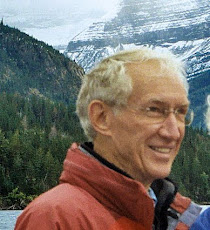The other day, sharp Shanna Crutchfield from Visions of
Equity, a consultancy working with us of Pratt on Racial Equity, described
herself as “a work-in-process.” I am
struck by that. I, too, have been and am
a work in process. I suppose we all are
in our own ways, some more radically than others, some at different speeds than
others. In my case, process speeds have
come in spurts – especially on matters of social awareness and unearned
privilege.
My first, wholly unearned privilege, of course, was pure demographics. 1934, the year I was born, was third lowest
year for US births since the WWI. By the
time my high school class of ’52 were applying, colleges and Universities had
graduated the tail end of the GI Bill crowd. More labs and dorms had been built
for them and faculty hired; schools had capacity to fill and were hungry for
those few of us, two-thirds of whom weren’t even seeking admission. Ten years later, when the baby boomers were
applying, including a lot more of the women boomers than in our day, schools
could be selective. I couldn’t then have
cracked open the doors to a Hamilton or Harvard. And business was booming in the late ‘50’s, when
we few went into the job market, mainly men of course, companies were scrambling
to hire us.
My second, unearned privilege was that Y chromosome. In 1976, I was put in charge of General Mills’
Marketing Services, a collection of departments that executed the marketing
programs of our brand divisions.
Sixty-five percent or more of my 400+ employees were women. I was 42, well brought up, well-educated and
always respectful of women, though I had not worked around many other than
secretaries. Boy, did I have a lot to
learn (through sheer confrontation) about unconscious male privilege! Suppositions
shattered. I am proud to have carried
over those lessons to Marriott and Westin, and helped move women into positions
of responsibility they earned and deserved.
But, I regret to say in hindsight, I should have done more about sexism;
we were too lenient on harassers in those days before #MeToo.
The third unearned privilege? Race. I am, Ancestor tells me, a stew of
Northern European and British genes, that stew that over eons, evolved ‘whites’. Pratt’s racial equity initiatives, and
Shanna’s encouragement, have challenged me anew. I was raised in an unequal Maryland of
segregation and discrimination. We were
aware; I was raised in a family that was intolerant of racism. Our father was
intolerant only of intolerance, and he was a fighter. But despite being aware
of and opposed to the hardships and injustices delivered on black Americans, it
wasn’t until the coin of Discrimination has been flipped over to its other
side, White Privilege, that my in-process once again has been sped up.
Examining my white privilege has abruptly confronted my
attitudes, certitudes and sensitivities.
It seems, after all, it’s not too late for an old dog to learn new
tricks. The now question is what do I do
with this awakening? One of the first changes is to think equity rather than
equality. I’d always focused on equality
of access and opportunity. But in the light of privilege, is equality enough? What
does equity demand? Tough questions – personally,
professionally, and politically. What
causes deserve support? What politicians
deserve support? What should my town and
community be doing? Where should my
energies and resources be applied? What do I want my grandchildren to believe? What
actions are affirmative?
I have few answers so far, but lots of new and unsettling
questions. A work in process,
indeed.




















